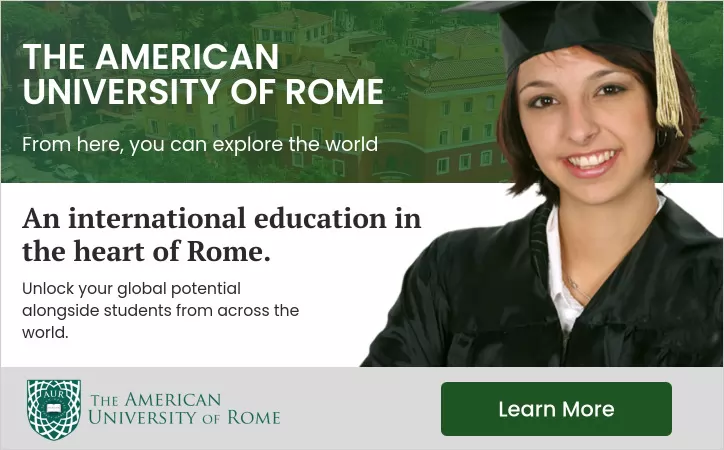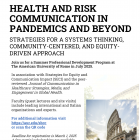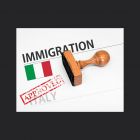There is no ‘migrant crisis’ on Lampedusa
The tiny Sicilian island continues to respond with simplicity and humanity to the challenge of sea arrivals.
One of the most striking things about Lampedusa is how the different aspects of its identity – fishing island, summer tourist destination and first port of safety for refugees fleeing violence and persecution and economic migrants seeking better opportunities in Europe – sit comfortably together.
On the first Sunday in October, coast guard and finance police boats used in patrols and search and rescue missions are berthed in the harbour alongside small pleasure boats bobbing gently on their moorings, while fishing trawlers are at anchor in the bay. In the commercial port, cars, lorries and passengers, including migrants and refugees, are on the quayside waiting to board a ferry bound for Porto Empedocle on mainland Sicily. The roar of engine noise can be heard as an aircraft flies out of the small airport nearby.
The signs of Lampedusa’s vocation as the place of arrival for many people making the dangerous sea crossing from north Africa to Italy are everywhere to be seen. The port is littered with the rotting carcasses of small wooden fishing vessels or rusting metal boats, some still containing the material leftovers of the journey: empty plastic bottles and fuel cannisters, tyre inner tubes, clothes, shoes, infant life jackets. The very topography of the island, with its steep, craggy cliffs in the north and white sandy beaches and shallow waters to the south, seems almost an invitation to land.
There are also the signs of the tragedies that play out in its waters on a regular basis. They are visible in the New Hope monument to the victims of the shipwreck of 3 October 2013, in which 368 refugees, almost exclusively from Eritrea, lost their lives, and in the Porta d’Europa on the island’s southernmost point, a 2008 monument designed by Mimmo Paladino to resemble a doorway and representing the gateway to Europe.
They are visible in the Cala Pisana cemetery east of the town, which has a special section for migrants and refugees, many of whom have unnamed graves. They are visible in the Museo della fiducia e del dialogo per il Mediterraneo in Piazza Castello with its display of personal belongings of shipwreck victims.
However, there is no ‘migrant crisis’ on Lampedusa. Recent reports of tension and chaos due to a sudden peak in the number of sea arrivals and the prevailing narrative of an ‘invasion’ simply do not correspond to the reality on this barren landmass extending over barely 20 square kilometres that is closer to Tunisia than it is to Italy.
Lampedusa has been receiving refugees and economic migrants – alive and dead – for decades, and it has done so with a simplicity and humanity that, as local mayor Flippo Mannino said eloquently at a ceremony marking the tenth anniversary of the 3 October 2013 shipwreck, continues to be a lesson to Italy and the rest of Europe.
Of course there are difficulties, and not everyone on the island of 6,000 people is sympathetic to the migrant and refugee cause, as testified by protests coinciding with a visit by Italy’s right-wing prime minister Giorgia Meloni and European Commission President Ursula Von der Leyen following a sudden surge in landings in September, or by the graffiti that appeared on the Porta d’Europa ahead of the 3 October commemorations attended by survivors, relatives of the victims, representatives of international and civil society organisations, religious authorities, local administrators and over 200 students from all over Italy and Europe who had flown into Lampedusa for a three-day formative event organised by the Comitato 3 Ottobre to promote a culture of solidarity, activism and respect for human rights.
Migrant and refugee arrivals by sea in Italy have almost doubled this year from the same period in 2022, according to interior ministry figures. The increase can be explained by a combination of factors including economic and social crises, new or ongoing conflict, climate change, good sailing weather and a crackdown on sub-Saharan Africans in Tunisia, this year the country of departure for over two thirds of the migrants and refugees arriving in Italy. Indeed so far in 2023 the two most common countries of origin of sea arrivals are Guinea and Ivory Coast, respectively at 14 per cent and 13 per cent, followed by Tunisia at 11 per cent. Last year Ivory Coast, then the top-ranking country of origin in sub-Saharan Africa, stood at 3 per cent.
Of the 134,162 arrivals recorded as of 2 October 2023, approximately 70 per cent have disembarked on Lampedusa, creating significant operational and logistical problems for the island and putting the limited local reception capacity under strain.
However, the national and local authorities have responded to the pressure by reorganising the first-line reception centre, or ‘hotspot’, under new Italian Red Cross management to ensure adequate accommodation and assistance for hundreds – and sometimes even thousands – of people on a temporary basis and setting up a system of swift and systematic transfers off the island by plane or ferry to reception facilities in other parts of Sicily and mainland Italy. Consequently, except in situations of exceptional numbers of arrivals, the activities of sea rescue, disembarkation and transfer now seem to function like a well-oiled machine.
So on the evening of 2 October, as tourists thronged Lampedusa’s main thoroughfare, students gathered for a concert by Africa inspired artist Sandro Joyeux in Piazza Castello overlooking the harbour and islanders went about their ordinary business, few people noticed the disembarkation – the fifth that day – underway at the Favaloro quay following the arrival in port of a boat from Libya carrying around 40 people from Syria, Bangladesh, Sudan, Afghanistan and Morocco. The new arrivals underwent a brief medical triage and screening for vulnerabilities and protection needs and were served water and biscuits before being ushered onto small buses and taken to the hotspot – all in the space of under an hour.
It is therefore only fair to say that the real emergency lies elsewhere.
It lies in the failure of states and of the international community to adequately address the issues that spur migration, through conflict resolution and promotion of human rights, by tackling the climate crisis and by creating adequate economic opportunities in countries of origin and transit so that people do not feel they have no other option but to leave.
It lies in the central Mediterranean which, despite the cries of “Never again!” that followed the 3 October 2013 shipwreck and another one also off Lampedusa just eight days later on 11 October in which 268 Syrian refugees died, continues to count its dead: approximately 22,300 of the 28,000 dead and missing in the Mediterranean since 2013 have lost their lives in this stretch of sea, according to UNHCR figures. Despite the concerted efforts of the Italian authorities and civil rescue fleet, in the continued absence of a state-led European search and rescue mission the crossing from Tunisia and Libya to Italy remains one of the deadliest migration routes in the world.
And it lies in the refusal of many national governments, including Italy’s own, to see migration for what it is: a structural phenomenon requiring structural responses. Policies oriented towards repression and border control, aimed at keeping people out or at making it more difficult for them to stay on a legal basis once they have arrived, have the net effect of creating growing pockets of marginalisation and lawlessness that are then even more difficult to manage.
Mayors in Italy on both sides of the political spectrum know this only too well. As the ones ultimately responsible for the integration and inclusion of refugees and migrants arriving in their communities, they have repeatedly called on the Meloni government to ensure that the measures it takes to make good on its election campaign promise to curb irregular migration to Italy do not end up creating an invisible population without access to services or rights. Under a new law limiting residence permits for foreigners, introduced in response to the shipwreck off Steccato di Cutro in Calabria on 26 February 2023 in which 94 people including 35 minors are known to have died, local administrators insist that this is a very real danger.
Instead what is required are more regular channels of entry for both refugees and economic migrants, who Italy and Europe need in order to combat population decline and shore up an ageing workforce. The announcement in July by the Meloni government of plans to increase the quota system for foreign workers from outside the European Union goes in the right direction.
However, such initiatives need to be accompanied by investment in reception, particularly at community level, and services for people arriving via irregular channels, with a particular focus on those with specific needs such as unaccompanied minors, survivors of gender-based violence and victims of trafficking, as well as the establishment of working bilateral agreements with countries of origin for the quick and dignified repatriation of those not eligible to stay.
These are difficult and complex issues. However, in seeking solutions Lampedusa can perhaps be a source of inspiration.
By Laura Clarke
This article is published in the October 2023 online edition of Wanted in Rome magazine.
General Info
View on Map
There is no ‘migrant crisis’ on Lampedusa
92010 Lampedusa AG, Italy



















